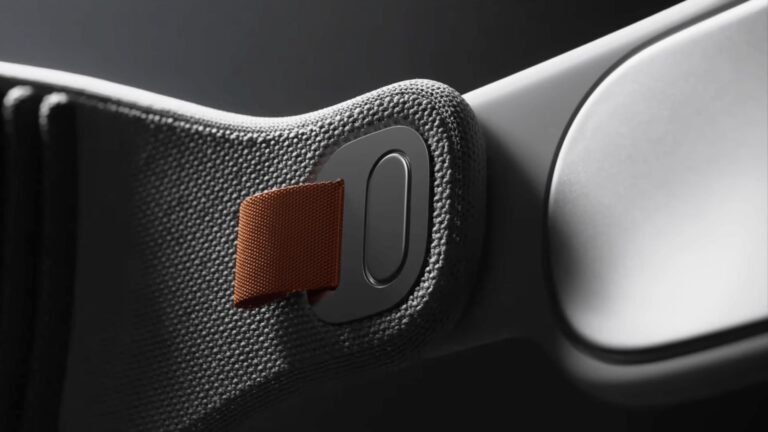
Apple Vision Pro is lots of things to lots of people. Visionary device… standards-pushing XR milestone… expensive toy… commercial flop. It’s arguably all those things, and the answer depends on whom you ask. With such a culturally-engrained company, everyone has an opinion.
Vision Pro’s fate has also been the subject of swirling rumors and telephone-game punditry where speculation multiplies with each progressive take. The same goes for its rumored smart glasses sibling, with the most recent rumors pointing to its development being shelved.
Of course, the very existence of that smart glasses project was itself a rumor. So its discontinuation is a rumor on top of a rumor. That double-secret probation – though it’s been treated as gospel by the herd-mentality tech press and blogosphere – is anything but certain.
So where does all of that lead us in terms of Apple’s spatial computing roadmap? Because device-level speculation is a moving target, we’ll instead take a step back and triangulate broader directions based on Apple’s motivations. In other words, it’s time again to follow the money.
Follow the Money
In the spirit of following the money, a driving factor for most moves Apple makes these days is revenue diversification. As smartphones reach global saturation and iPhone revenue decelerates, Apple has to find other ways to maintain revenue growth – and do so at massive scale.
This “good problem to have” faces tech giants that have to constantly maintain revenue growth – which gets harder on a percentage basis as the revenue base grows (law of large numbers). So the only way to feed the beast is to conquer massive markets. Think: Amazon and healthcare.
Back to Apple, revenue diversification is the marching order for two divisions: wearables and services. For wearables, revenue each quarter mostly offsets year-over-year iPhone revenue declines. And services – like Apple TV+ – do the same. They now exceed one billion users.
The key for Vision Pro is that it supports and is propelled by both these efforts. First, with wearables, Vision Pro syncs with Watch and AirPods, where visuals join spatial audio and biometrics like health and fitness. These integrations are gradual but underway and evolving.
With services, Vision Pro is positioned as an elite and immersive consumption experience, including massive virtual screens and serene viewing environments. In-flight and at-home entertainment are use cases, as are spectator sports such as courtside seats (and this).
Immersive Entertainment: the Tip of the Spear for Apple Vision Pro?
Connect the Dots
Sticking with the latter, it’s all about the visceral nature of the squeaking hardwood in basketball and bodies slamming into boards in hockey. And you can connect the dots: Apple’s NextVR acquisition, MLS streaming rights, and discussions with the NBA all point to this outcome.
This elite consumption experience comes together when you triangulate Apple’s growing entertainment offerings and a first-party immersive hardware play. It meanwhile owns the operating system and app marketplace. Altogether, it’s classic Apple vertical integration.
Meanwhile, a common thread in all the above is use cases that have broad appeal and thus massive markets. That traces back to Apple’s law-of-large-numbers mandate. Again, it’s so big that it has to shoot for massive markets to move the needle for consequential revenue growth.
So what else hits that target? Besides entertainment there’s communications. In that light, Vision Pro offers immersive calls for social and enterprise contexts, as well as workplace productivity with dynamic virtual monitors. Like the above, this is developing gradually but is the target.
We could also see personal assistant functions to guide you through daily activities. This will be sort of like the intelligence layer Siri provides for iThings today, but with a brain transplant, otherwise known as Apple intelligence. And Apple has a massive first-party data advantage here.
Not a Mass Market Product
But with all of the above, a key question arises. If Apple is so intent on large-market conquests, how does an expensive and low-penetration device accomplish that? The answer is that it doesn’t, yet. That’s why the word “gradual” was repeated a few times in this narrative.
Put another way, Vision Pro is among the first steps in a long journey for Apple. It had to demonstrate what was technically possible in V1 at any cost. The goal going forward – though rumors point to ample friction – is then to iterate over several generations to bring the price down.
Sticking with the price tag for a moment, it has gotten ample flack for diminishing Vision Pro’s demand. However, we believe that misses the point. Vision Pro’s job wasn’t to sell millions of units in its first year. Tim Cook even admitted publicly that it’s “not a mass-market product.”
Its job was rather to create something magical that people covet – an elite device that’s out of reach for most. Apple calculated this as the best chess move, versus a device that’s cost-efficient and underwhelming. Apple wants you to complain about the price tag, not the magic.
Think of this like Tesla’s early strategy. It was elite and expensive in early days. Then as price came down and volume scaled up, those initial elite vibes fueled years of demand. This is a version of Apple’s long-game plan to maintain iThing dominance in a post-iPhone world.
We’ll pause there and cue the video brief below, as well as the full report from our research arm ARtillery Intelligence. And stay tuned for lots more Apple analysis as its spatial ambitions evolve.
